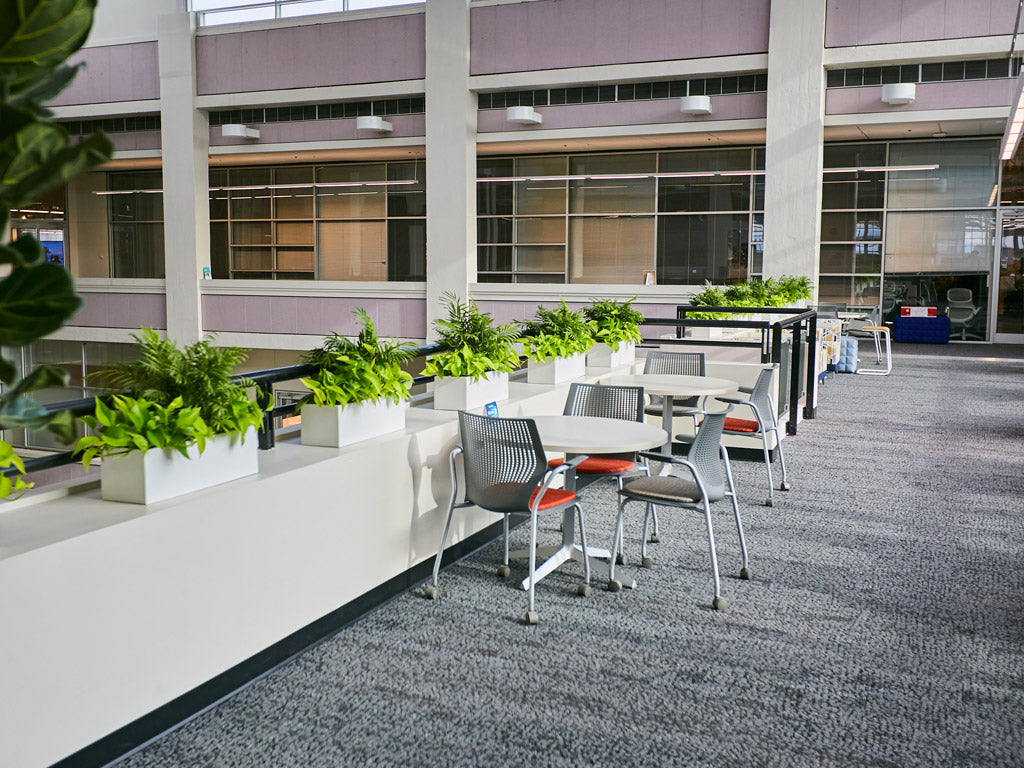
Biophilic Design: Revolutionizing Workspaces with Nature-Inspired Elements
In modern office design, the focus is shifting beyond aesthetics to creating spaces that foster well-being, creativity, and productivity. Enter biophilic design—a concept that integrates natural elements into built environments. Rooted in our innate connection to nature, biophilic design is transforming workspaces by introducing a harmonious blend of greenery, natural light, and organic materials.
What is Biophilic Design?
Biophilic design is a concept that seeks to reconnect people with nature in their everyday surroundings. Derived from the term "biophilia," meaning "love of life or living things," this design philosophy emphasizes incorporating natural elements into architectural spaces. In workspaces, this can range from simple additions like indoor plants and water features to more comprehensive designs that integrate natural light, organic shapes, and outdoor views.
Benefits of Biophilic Design in Workspaces
The integration of biophilic principles in office environments offers a range of benefits:
-
Enhanced Well-being and Mental Health: Research shows that exposure to natural elements reduces stress, boosts mood, and enhances mental clarity. Employees in biophilic workspaces tend to report higher levels of job satisfaction and emotional well-being.
-
Improved Productivity: Natural elements such as plants, wood textures, and daylight have been proven to increase focus and cognitive function. Employees working in environments designed with biophilic principles show a significant increase in productivity and creativity.
-
Better Air Quality: Integrating natural ventilation, plants, and sustainable materials improves indoor air quality, leading to a healthier and more comfortable workspace.
-
Stronger Employee Engagement: A workspace that prioritizes well-being fosters a sense of belonging and care among employees. As a result, companies with biophilic designs often experience higher employee retention and engagement levels.
Key Elements of Biophilic Design for Workspaces
-
Incorporation of Indoor Plants: Plants are central to biophilic design. They not only beautify the space but also purify the air and create a more soothing environment. Vertical gardens, potted plants, and hanging greenery are popular ways to introduce biophilia.
-
Natural Light and Views: Maximizing natural light and offering views of outdoor landscapes are critical aspects of biophilic design. Offices that integrate large windows or skylights enhance both the aesthetic and the overall mood of the space.
-
Organic Shapes and Patterns: Nature-inspired patterns, textures, and materials—such as wood, stone, and water—add warmth and create a more organic feel. Curved forms and asymmetrical designs mimic the natural world and offer a break from rigid, linear layouts.
-
Water Elements: Introducing water features, whether through fountains, aquariums, or even imagery of water, helps create a calming atmosphere that reduces stress and enhances creativity.
-
Multi-sensory Design: Biophilic workspaces engage more than just the sense of sight. Incorporating natural scents, sounds like running water or birdsong, and textured materials contribute to a full sensory experience that connects employees with nature.
Real-World Examples of Biophilic Workspaces
Companies around the globe are embracing biophilic design to create more engaging and inspiring work environments. Examples include offices with extensive green walls, open-plan designs that blend indoor and outdoor spaces, and even nature-themed workstations that allow employees to work amidst greenery.
Biophilic Design on a Budget
Small businesses and start-ups can also embrace biophilic principles without breaking the bank. Start with low-maintenance indoor plants, use natural wood finishes, and maximize access to natural light. Even simple changes like incorporating nature-inspired artwork or rearranging furniture to face windows can make a big difference.
Conclusion: Designing for a Healthier Future
Biophilic design is more than just a trend—it’s a response to the growing demand for healthier, more fulfilling work environments. By integrating natural elements into workspaces, companies can boost employee well-being, improve productivity, and create an atmosphere that promotes innovation and collaboration. As we continue to understand the profound impact of nature on our lives, biophilic design is poised to become a staple in the future of workplace design.
